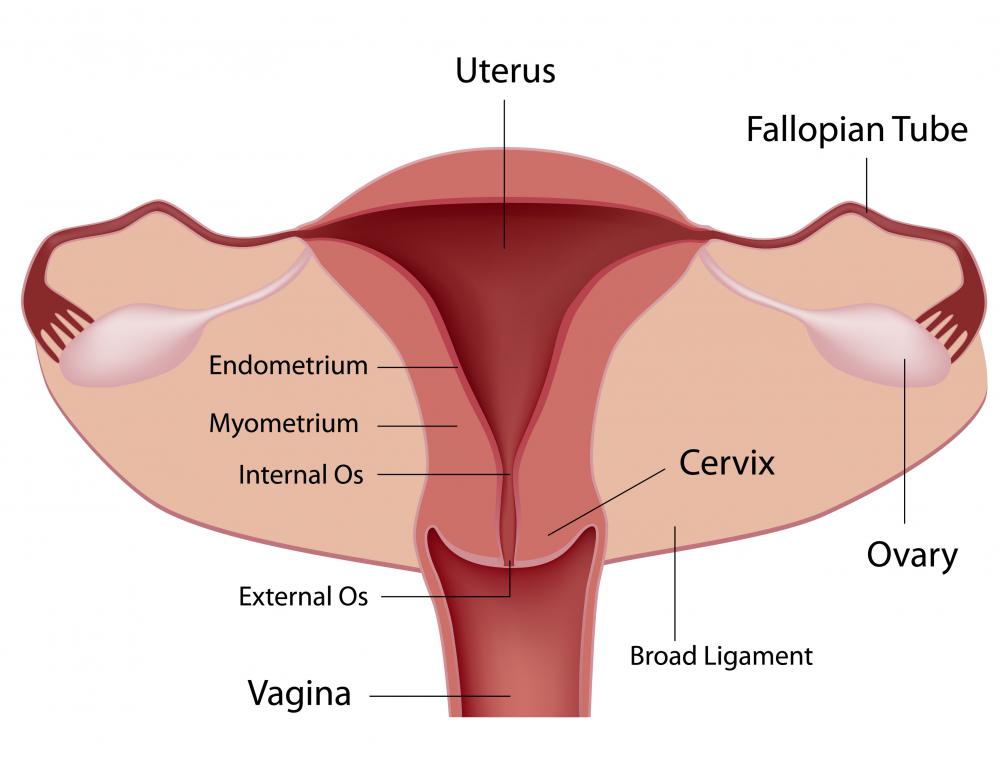At WiseGEEK, we're committed to delivering accurate, trustworthy information. Our expert-authored content is rigorously fact-checked and sourced from credible authorities. Discover how we uphold the highest standards in providing you with reliable knowledge.
What is a Pomeroy Tubal Ligation?
A Pomeroy tubal ligation is a sterilization procedure for women performed using the Pomeroy technique. This technique was developed by Doctor Ralph Pomeroy, a gynecologist who practiced at the end of the 19th century and the early 20th century. The method he developed for sterilization proved so effective that it continues to be the most widely used method today, although other techniques are available and patients who are curious about which procedure their surgeons will use should ask.
In a Pomeroy tubal ligation, the surgeon makes an incision to access the fallopian tube and gathers up a “knuckle” of tube which is tied at the base. Then, the segment which forms the knuckle is cut out and removed. The incision is closed, and over the next several weeks, the suture holding the cut ends of the tube together will dissolve, allowing them to drift apart as they heal. Eggs cannot travel down the severed fallopian tube, and thus the woman cannot get pregnant.

Failure of sterilization techniques does occur. Sometimes after the procedure the cut ends drift back together and heal, or the suture does not dissolve and the fallopian tube becomes connected again. Surgeons can provide information about their failure rate to patients on request, and patients should be aware that the risk of tubal pregnancy is increased in the event of a tubal ligation failure. The risks of failure also depend on the type of procedure used by the surgeon and patients should make sure that they are aware of the risks before they consent to the surgery.

Women who later change their minds and decide that they do want children can have a tubal ligation reversal. After a Pomeroy tubal ligation, the fallopian tube is perfectly healthy, even if it is not connected anymore, and the ends can be rejoined. Pregnancy after reversal of the procedure is not guaranteed and women should not get a tubal ligation with the intent of reversing it later. There are other long term family planning options which are designed to be reversible, such as an intrauterine device (IUD).

People can opt to have a Pomeroy tubal ligation at any time, and the procedure may be performed endoscopically, leaving behind minimal scarring and leading to a relatively short recovery time. Sometimes women choose to be sterilized at the time of another gynecological or obstetric procedure. Surgeons may offer this option to women who have expressed a desire for sterilization so that women do not need to have multiple surgeries.
AS FEATURED ON:
AS FEATURED ON:















Discussion Comments
I had my Pomeroy tubal ligation with my third c-section and it really is that easy; you would never know that you had anything else done. The procedure only took an extra five minutes while they weighed and cleaned my baby. I went home knowing that it was something I didn't have to deal with a separate time. I didn't have to worry about birth control again! If you have a scheduled c-section, it makes perfect sense!
@Monika - Sometimes vasectomies don't take either! But, tubal ligations and vasectomies are the two methods that are closet to permanently making someone infertile.
One interesting thing is that it's actually a lot easier for a man to get a vasectomy than it is for a woman to get a tubal ligation. A vasectomy is only an outpatient procedure! I would urge women who don't have to have another surgical procedure done to talk with their partner about the partner having a vasectomy instead.
The human body is truly amazing. I had no idea the fallopian tubes could grow back together after being severed. Imagine having a tubal ligation and then getting pregnant. Talk about a surprise baby!
One thing I wanted to point out is that most places won't do a tubal ligation unless you're a certain age. Or unless you've had a certain number of children. So for younger, childless women who don't want to have children and IUD is probably your best option until you get older.
@dfoster85 - When you know it's your last pregnancy, tubal ligation through C-section can be appealing. I would urge you, though, to carefully consider whether a repeat C-section is really in your best interest.
I had a scheduled C-section with my first pregnancy because I had complete placenta previa (the placenta was directly over the cervix). But I opted for a vaginal birth the next time. It is major abdominal surgery that carries real, not insignificant risks for the mother, and in fact a subsequent C-section is more dangerous than the first because you're cutting into the same part of the body over and over.
See how long your scar is? The article mentions that tubal ligation can be done endoscopically, with a tiny incision that will heal much more readily. You might have less total healing time if you had a vaginal birth and a tubal ligation later.
Or, better yet, you have the baby and then let this be your husband's turn! Tell him to join the V-club!
I'm thinking of having a Pomeroy bilateral tubal ligation, as my doctor called it, after my next pregnancy. I had a C-section after a long, difficult labor with my first baby and he said that I could schedule a repeat C-section and have the tubal ligation done at the same time.
Is there any downside to doing that? It seems to efficient.
Post your comments